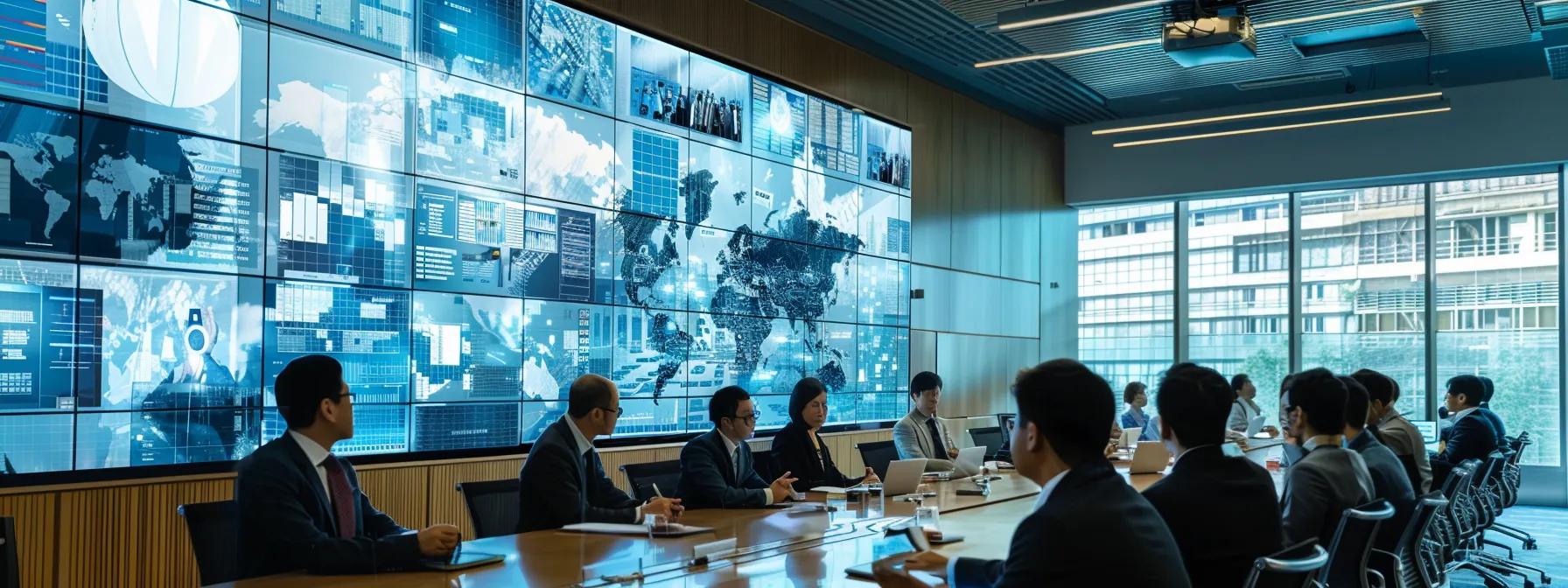
Avoid Costly Errors: The Critical Role of Technical Translation Services in Patents and Engineering
Technical translation services are indispensable for businesses operating in the global market, particularly in complex fields such as patents and engineering. Expert translation ensures that intricate technical details are accurately communicated, preserving the integrity of intellectual property and avoiding costly errors. When technical documents are mistranslated, the implications can be severe, from patent litigation to engineering failures. In this article, Translators.com explains why these services are crucial, outlining the risks, best practices, financial and legal consequences, and the many ways accurate translation supports global market expansion.
Why Is Patent Translation Accuracy Essential to Avoid Costly Errors?
Accurate patent translation is critical because even minor errors can lead to misinterpretation of technical claims and the sufficiency of disclosure. Patent translation involves converting text between languages while preserving technical terms, specifications, and legal nuances that protect innovation. Inaccuracies can jeopardize intellectual property rights and lead to infringement litigation.
What Are the Common Risks of Poor Patent Translations?
Poor patent translations can cause misinterpretation of patent claims, inadequate descriptions of inventions, and ambiguous language that competitors might exploit. Errors may result in the rejection of a patent application by an intellectual property office when evaluating criteria like novelty and inventive step. Such technical errors also risk creating loopholes that undermine patent protection and lead to infringement lawsuits and reduced market exclusivity.
How Does Accurate Patent Translation Protect Intellectual Property Rights?
A precise patent translation faithfully represents every technical detail and legal nuance. Correct translations enable inventors to secure global protection by meeting the rigorous standards of various jurisdictions. This accuracy prevents misunderstandings and loss of rights, while also forming a solid legal basis for enforcement actions in both the United States Patent and Trademark Office and under the European Patent Convention.
Which Compliance Standards Must Patent Translations Meet?
Patent translations must adhere to strict international standards and regional regulations, including guidelines from the World Intellectual Property Organization (WIPO) and the European Patent Office (EPO). These standards demand technical accuracy, consistency, and the use of industry-specific terminology. Translators.com employs certified linguists familiar with these requirements, ensuring that every translation is both accurate and compliant.
How Do Engineering Document Translations Impact Project Success?

Accurate engineering document translations are vital for ensuring that project specifications, safety standards, and quality control measures are clearly communicated. They form the backbone of international collaborations and project management, enabling companies to uphold uniform standards across language barriers.
What Types of Engineering Documents Require Precise Translation?
Key engineering documents include technical drawings, user manuals, safety protocols, installation guides, and maintenance instructions. Regulatory submissions, bid documents, and quality assurance reports also demand precise translation. A minor error in assembly instructions or technical specifications can compromise the safety and performance of an engineering project.
How Can Translation Errors Affect Engineering Safety and Quality?
Errors in engineering translations can have hazardous effects on safety and quality. Misstating a critical safety parameter might lead to incorrect component installation or insufficient safety measures, thereby increasing the risk of failures and prompting recalls or legal actions. Inaccurate translations can also result in non-compliance with international safety codes, endangering both employees and the company’s reputation.
What Role Do Specialized Linguists Play in Engineering Translations?
Specialized linguists ensure that every technical term and specification is correctly rendered. Their deep knowledge of both source and target languages—combined with a solid grasp of engineering concepts and industry-specific nomenclature—ensures clear and unambiguous communication. This subject matter expertise is key to preventing errors and supporting successful, safe project execution.
What Are the Best Practices for Technical Translation Services in Patents and Engineering?
Best practices in technical translation emphasize precision, consistency, and cultural relevance at every stage—from initial translation to final review. Rigorous processes, advanced translation tools, and skilled human translators collectively build trust in the translated documents.
How to Ensure Accuracy and Consistency in Technical Translations?
Ensuring accuracy requires comprehensive quality control measures. This includes the use of translation memory tools and glossaries to standardize technical terminology. Professional translators perform peer reviews and iterative revisions, while specialized software cross-checks terminology with established technical dictionaries to guarantee both legal and technical accuracy.
Why Is Subject Matter Expertise Critical for Technical Translators?
Subject matter expertise bridges the gap between language and technical content. Translators working on patents and engineering documents must grasp complex concepts—such as semiconductor technology, fluid dynamics, and electronic circuitry—in order to capture subtle details accurately. This expertise prevents the loss of critical measurements or chemical formula precision that could otherwise result in severe real-world consequences.
How Does Cultural and Linguistic Adaptation Support Global Market Entry?
Adapting translations to local cultures and regulatory expectations enhances clarity and builds trust with regional stakeholders. When documents reflect local terminology and consumer preferences, they are more likely to gain smoother regulatory approval and market acceptance. Combining high-quality translation with cultural insights ensures technical documents meet international standards and support seamless cross-border collaborations.
What Are the Financial and Legal Consequences of Poor Technical Translations?

Poor technical translations can lead to significant financial losses and expensive legal disputes. Inaccuracies often cause project delays, rework, or complete failures, underscoring the need for high-quality translation services.
How Can Translation Errors Lead to Patent Litigation or Rejection?
Mistranslations can cause ambiguous patent claims and result in the rejection of an application by intellectual property offices. Ambiguous language may weaken patent enforceability and expose inventors to infringement by competitors—potentially leading to costly litigation and extensive legal fees.
What Are the Potential Costs of Engineering Failures Due to Translation Mistakes?
Translation errors in engineering documents can lead to design flaws, construction mistakes, and product malfunctions. Such errors might trigger product recalls, extensive rework, and remediation efforts, posing risks to user safety and corporate reputation. In industries like aerospace and automotive engineering, even minor mistakes can have catastrophic effects and attract regulatory fines and legal liabilities.
How Do Accurate Translations Mitigate Business Risks?
Accurate translations help mitigate risks by ensuring that technical and legal documents are clear and precise. This reduces the likelihood of patent disputes, non-compliance issues, and engineering project failures. Investment in certified translation services with specialized expertise protects businesses from litigation risks and regulatory penalties, making technical translations a strategic asset.
How Can Businesses Choose the Right Technical Translation Service Provider?
Selecting the right translation partner is crucial for achieving both legal protection and engineering precision. The correct provider will deliver accurately translated, culturally adapted documents that comply with all relevant regulatory standards.
What Criteria Define a Reliable Technical Translation Company?
A reliable provider is characterized by accuracy, international standard compliance, and expertise in specific technical fields. Key factors include proper certification, substantial industry experience, robust quality assurance processes, and the use of advanced translation management systems. Companies like
are distinguished by their employment of certified linguists and cutting-edge translation technologies.
How Important Is Industry-Specific Expertise in Translation Services?
Industry-specific expertise is essential because technical translations require a deep understanding of specialized terminology and context. For instance, translating a semiconductor patent or a bridge design specification demands both linguistic skill and subject matter knowledge, ensuring that the translation is not only accurate but also contextually relevant.
What Questions Should You Ask Before Hiring a Technical Translator?
Before hiring a translator, businesses should inquire about: - The certifications and industry training held by the translators. - The methods used to ensure consistency and accuracy across extensive technical projects. - Availability of case studies or references from previous work in patents or engineering. These questions help determine if a provider can deliver error-free, compliant, and high-quality translations.
How Does Technical Translation Facilitate Global Market Entry for Patents and Engineering?

Technical translation is essential for global market entry, ensuring that patents and engineering documents meet varied international regulatory requirements. High-quality translations break down language barriers, enabling companies to expand into new regions confidently.
What Role Does Translation Play in Meeting International Regulatory Requirements?
Translation ensures that all documents meet the precise standards expected by regulatory agencies. For example, adherence to guidelines set by the European Patent Office or the United States Patent and Trademark Office depends on error-free, clear translations that satisfy local requirements, thereby reducing approval delays.
How Can Accurate Translations Improve Cross-Border Collaboration?
Accurate translations provide a common technical language for international teams. When every stakeholder—regardless of native language—works from the same technical document, it prevents miscommunication that could delay projects or increase costs. The clarity and uniformity provided by precise translations improve project efficiency and cross-border collaboration.
What Are Examples of Successful Global Market Entry Enabled by Technical Translation?
Many multinational technology firms have successfully secured intellectual property rights across multiple jurisdictions by relying on accurate patent translations. Similarly, engineering companies have met local construction codes in various regions through precise technical translations. These examples illustrate how expert translation facilitates smooth global operations without regulatory setbacks.
What Tools and Technologies Support High-Quality Technical Translations?
Modern technical translation relies on advanced tools and technologies to ensure precision and consistency. Automated systems, translation memory software, and specialized glossaries contribute significantly to delivering high-quality translations.
How Do Translation Memory and Glossaries Improve Consistency?
Translation Memory (TM) systems store segments of previously translated text, ensuring that once a term is translated, it is used consistently in future projects. Specialized glossaries standardize complete technical vocabularies across documents, reducing variations and errors. This consistency strengthens both legal clarity and technical precision.
What Is the Role of Human Review in Technical Translation Quality?
Despite the benefits of machine-assisted translation, human review is essential. Expert linguists meticulously check machine-generated drafts for context, grammar, and technical accuracy. This quality control process is especially important for documents in complex fields like patent law and engineering, where precise language is crucial.
How Can Machine Translation Be Safely Used in Technical Fields?
Machine Translation (MT) can be employed to produce rapid first drafts when paired with human post-editing. This hybrid approach, known as machine translation post-editing, ensures that the final product is both contextually accurate and technically precise. Integrating MT with translation memories, glossaries, and expert review minimizes errors while increasing translation efficiency.
Frequently Asked Questions
Q: How do technical translation errors impact patent litigation?
A: Errors in translating patents can lead to ambiguous claims, triggering legal disputes and infringement litigation.
Q: What methods are recommended to improve consistency in technical translations?
A: The use of translation memory systems and standardized glossaries paired with rigorous human quality reviews is essential.
Q: Can machine translation be trusted for technical documents?
A: Machine translation is most effective as a first draft when combined with thorough human post-editing to ensure accuracy and clarity.
Q: How do regulatory requirements influence technical translation quality?
A: Strict regulatory requirements demand precise terminology and clarity, so translations must adhere to international standards, such as those set by the EPO and USPTO.
Q: What are the financial risks of poor technical translations?
A: Inaccurate translations can result in patent rejections, product recalls, legal fees, and project delays that may cost companies millions.
Q: Why is industry-specific expertise important in technical translations?
A: Specialized expertise ensures that technical details and terminologies are accurately conveyed, reducing the risk of safety issues and legal complications.
Final Thoughts
Technical translation services are a cornerstone of international business, especially in the fields of patents and engineering. High-quality translations protect intellectual property, prevent litigation, and ensure that complex engineering documents are executed safely and efficiently. By leveraging advanced technologies, translation memories, and specialized expertise, companies like Translators.com enable businesses to expand into global markets with confidence. Investing in expert technical translation services ultimately mitigates risks, enhances regulatory compliance, and supports sustainable innovation in an increasingly competitive global landscape.








